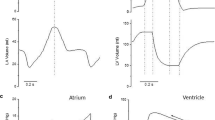Abstract
Velocity of shortening is dependent on the myosin heavy chain (MHC) isoform pattern in both skeletal and cardiac muscle (Pagani and Julian, 1984). Furthermore, it has been reported that a shift in MHC isoform ratio occurs with certain physiological or pathophysiological changes such as hypertrophy and/or hyperplasia of striated muscles (Litten et al., 1974). Such shifts in MHC isoform proportions accompany concomitant changes in shortening velocity and ATPase activity (Alpert et al., 1979; Alpert and Mulieri, 1980). At least two different MHC isoforms have been reported to exist in various different smooth muscles (Sparrow et al., 1987). The 200 kDa form and the 204 kDa form have been designated MHC1 and MHC2, respectively. The ratio of MHC1:MHC2 has been shown to vary dependent on smooth muscle type, animal species, stage of development, and under certain different physiological or pathophysiological conditions for the same muscle type (Sparrow et al., 1987; Mohammed and Sparrow, 1988). However, no functional correlation has yet been made between MHC isoform ratio and shortening velocity for smooth muscle. Therefore, the purpose of this study was to compare force-velocity (F-V) relationships and MHC isoform ratios from two different arterial muscles (pulmonary versus caudal) from the same species (rat).
Access this chapter
Tax calculation will be finalised at checkout
Purchases are for personal use only
Preview
Unable to display preview. Download preview PDF.
Similar content being viewed by others
References
Alpert, N. R., Mulieri, L. A., and Litten, R. Z., 1979, Functional significance of altered myosin adenosine triphosphatase activity in enlarged hearts, Am. J. Cardiol., 44: 947.
Alpert, N. R. and Mulieri, L. A., 1980, The functional significance of altered tension dependent heat in thyrotoxic myocardial hypertrophy, Basic Res. Cardiol., 75: 179.
Bárány, M., 1967, ATPase activity of myosin correlated with speed of muscle shortening, J. Gen. Physiol., 50: 197.
Litten, R. Z., Martin, B. J., Low, R. B., and Alpert, N. R., 1982, Altered myosin isozyme patterns from pressure-overloaded and thyrotoxic hypertrophied rabbit hearts, Circ. Res., 50: 856.
Meiss, R. A., 1987, Stiffness of active smooth muscle during forced elongation, Am. J. Physiol., 253: C484.
Mohammed, M. A. and Sparrow, M. P., 1988, Changes in myosin heavy chain stoichiometry in pig tracheal smooth muscle during development, FEBS Lett., 228: 109.
Packer, C. S. and Stephens, N. L., 1985, Force-velocity relationships in hypertensive arterial smooth muscle, Can. J. Physiol. Pharmacol., 63: 669.
Pagani, E. D. and Julian, F. J., 1984, Rabbit papillary muscle myosin isozymes and the velocity of muscle shortening, Circ. Res., 54: 586.
Porzio, M. A. and Pearson, A. M., 1977, Improved resolution of myofibrillar proteins with sodium dodecyl sulfate-polyacrylamide gel electrophoresis, Biochem. Biophys. Acta, 490: 27.
Sparrow, M. P., Arner, A., Hellstrand, P., Morono, I., Mohammed, M. A., and Rüegg, J. C., 1987, Isoforms of myosin in smooth muscle, in: “Regulation and Contraction of Smooth Muscle”, M. J. Siegman, A. P. Somlyo, and N. L. Stephens, eds., Alan R. Liss, New York, p. 67.
Author information
Authors and Affiliations
Editor information
Editors and Affiliations
Rights and permissions
Copyright information
© 1991 Plenum Press, New York
About this chapter
Cite this chapter
Packer, C.S., Griffith, S.L., Roepke, J.E., Meiss, R.A., Rhoades, R.A. (1991). Myosin Heavy Chain Isoform Patterns Do Not Correlate with Force-Velocity Relationships in Pulmonary Arterial Compared with Systemic Arterial Smooth Muscle. In: Moreland, R.S. (eds) Regulation of Smooth Muscle Contraction. Advances in Experimental Medicine and Biology, vol 304. Springer, Boston, MA. https://doi.org/10.1007/978-1-4684-6003-2_32
Download citation
DOI: https://doi.org/10.1007/978-1-4684-6003-2_32
Publisher Name: Springer, Boston, MA
Print ISBN: 978-1-4684-6005-6
Online ISBN: 978-1-4684-6003-2
eBook Packages: Springer Book Archive




